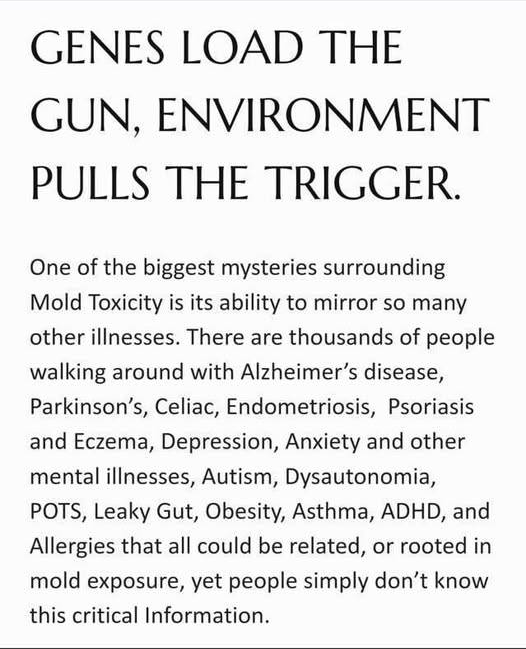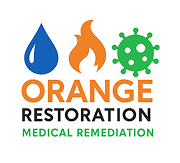At Orange Restoration, we regularly work with individuals suffering from chronic illnesses linked to mold exposure, including CIRS (Chronic Inflammatory Response Syndrome). These aren’t vague, passing ailments — they’re life-altering conditions that require medically sound environments to begin healing. As San Diego County’s trusted expert in mold remediation, and a contractor selected by government agencies for ultrafine particle or small particle remediation, we don’t take that responsibility lightly.
In recent months, we’ve noticed a troubling trend: an uptick in secondary mold contamination cases. These are situations where homeowners hired what they believed were qualified professionals to remove mold.. Only to find that the cleanup was incomplete, careless, or even dangerously misguided. Still, some homeowners are at fault and have attempted a DIY mold remediation when they do not have the experience.
Families trust remediation companies to do more than just rip out drywall, they trust us to make their homes safe again. So when we walk into a home that’s already been “remediated” but still shows signs of cross-contamination, improper cleaning, or poorly handled containment, we feel more than frustration. We feel genuine embarrassment for our industry.
Some of these families have gone months or even years without realizing that residual mold spores and ultrafine particles were still circulating through their HVAC systems, embedded in belongings, or lingering in inaccessible spaces.
The result?
Their health continues to decline, sometimes subtly, sometimes dramatically, because the root cause of their illness was never fully removed.
We don’t believe in placing blame. But we do believe in raising the bar. –The Medical Sound Remediators
This means:
- Following IICRC S520 standards and going beyond them where medically necessary.
- Using HERTSMI-2 and ERMI testing as part of a whole-environment analysis, not in isolation.
- Training our team in medically sound remediation to ensure homes are not just visibly clean, but safe for sensitive individuals.
- Consulting with Indoor Environmental Professionals (IEPs) and using third party testing labs as partners in accountability for Post Remediation Verification (PRV) testing
Our empathy comes not from marketing, but from standing with families as they’ve cried in frustration, sat through ER visits, and paid out of pocket for half-measures that failed them.
If you’re one of those families, know this:
You are not alone, and you are not imagining it. Your environment could still be the problem. Remember, most of our work comes from other remediation teams who have NOT done the work properly.
And fixing Secondary mold requires more than wiping surfaces or spraying disinfectant. It takes careful inspection, source-level remediation, and above all, respect for the impact mold has on human lives.
If you’re facing unexplained health issues, mold sensitivity, or worsening symptoms after a previous remediation, reach out. We can help you uncover what others may have missed — and restore your environment with the care it deserves.
CIRS, or Chronic Inflammatory Response Syndrome, is a complex condition that’s often misunderstood. Below, we’ve answered the most common questions our clients ask, grounded in current research and decades of field experience.
This is not medical advice but a science-backed exploration into the connection between indoor environments and chronic health.
1. What is CIRS?
Chronic Inflammatory Response Syndrome (CIRS) is a condition characterized by a prolonged inflammatory response triggered by exposure to biotoxins and volatile organic compounds (VOCs), particularly those found in mold-contaminated environments or water-damaged buildings (WDBs). This inflammation leads to a wide range of symptoms that can significantly impact quality of life.
The EPA estimates that over 50% of U.S. buildings have water damage. A leading factor in CIRS-WDB cases. –Whole Building Pollutant Sources, EPA
CIRS-WDB refers specifically to cases caused by environmental factors associated with water-damaged buildings. This includes mold, bacteria, VOCs, and other indoor air quality hazards.
“Dr. Shoemaker estimates that 80% of Chronic Inflammatory Response Syndrome (CIRS) cases are caused by repeated exposure to water-damaged buildings. These cases are designated as Chronic Inflammatory Response Syndrome (caused by) Water Damaged buildings or CIRS-WDB.” –Surviving Mold
2. What are the symptoms of CIRS?
Symptoms vary greatly but commonly include:
- Chronic fatigue (CFS often leads to a CIRS diagnosis)
- Muscle and joint pain
- Headaches
- Cognitive difficulties (“brain fog”)
- Sinus issues
- Shortness of breath
- Gastrointestinal problems
- Mood disorders like anxiety and depression
Unlike a standard mold allergy, CIRS stems from a systemic failure to detox due to genetic susceptibility, leading to long-term health issues. Many CIRS cases are initially misdiagnosed as Lyme disease, fibromyalgia, or chronic fatigue syndrome.
What Is CIRS and Why Does Mold Trigger It? –CIRS Is Not Rare Anymore

Why Does Mold Trigger CIRS?
For most people, the immune system recognizes and eliminates these toxins effectively. However, certain HLA gene variations (like HLA-DR and HLA-DQ) can impair this process, making it difficult to clear mold toxins from the body. Instead of being removed, these toxins can linger, triggering chronic inflammation and increasing the risk of Chronic Inflammatory Response Syndrome (CIRS).
This genetic susceptibility explains why some people in a moldy environment get sick while others remain unaffected. Approximately 25% of the population carries these HLA gene variants, making them more vulnerable to prolonged mold-related health issues. – Sensitivity to Mold and CIRS
3. How is CIRS diagnosed?
Diagnosis of CIRS typically involves:
- A detailed medical history and symptom analysis
- Blood tests for biotoxin markers and inflammation
- Visual Contrast Sensitivity (VCS) testing
- Environmental assessments of living and work spaces
Physicians trained in CIRS (such as those following the Shoemaker Protocol) use a strict diagnostic algorithm that helps confirm the presence of biotoxin illness. Also, Indoor Environmental Professionals (IEPS) often have helped families who are averse to western medicine practices to discover mold as the culprit in their health battle.
4. What treatments are available for CIRS?
Effective treatment involves a multiphase approach:
- Eliminate exposure to biotoxins
- Use binders to remove toxins from the body
- Address inflammation and hormonal imbalances
- Support detox pathways with diet and supplements
While we believe there is a medical revolution underway where environmental factors are increasingly considered in health diagnoses, we don’t provide medical treatment, but we do create safe environments that support recovery.
About the Shoemaker Protocol & CIRSx
The Shoemaker Protocol, developed by Dr. Ritchie Shoemaker, is a structured, evidence-based method to detoxify the body from biotoxins using pharmaceutical binders, nasal sprays, genetic testing, and strict environmental remediation.
CIRSx is a training platform for medical professionals and remediators. At Orange Restoration, our team is CIRSx-certified and trained to perform Medically Sound Remediation, which aligns with clinical protocols to ensure our clients recover in a clean, low-toxin environment.
5. Can CIRS be cured?
While there is no one-size-fits-all cure, many individuals with CIRS experience significant recovery with proper diagnosis, detox protocols, and environmental interventions. Recovery is possible, especially with early intervention and environmental control.
It is important to understand that mold sensitivity is linked to genetics. Roughly 25% of the population has HLA-DR/DQ gene types that make it difficult to clear mold toxins from the body. These people often get sick from exposure that others tolerate.
“Imagine mold spores building up in your immune system like uncollected garbage, if your body can’t haul it away, it just piles up and causes chaos.” –CIRS & Spring Cleaning

6. What lifestyle changes can help with CIRS?
Supportive lifestyle changes include:
- Avoiding mold and biotoxin exposure
- Maintaining a healthy, anti-inflammatory diet
- Managing stress levels
- Gentle, regular exercise (when tolerated)
- Partnering with holistic practitioners like CIRS coaches, functional medicine doctors, or naturopaths
Some patients report enhanced outcomes when combining holistic therapies with medical protocols.

7. Can CIRS affect mental health?
Absolutely. CIRS can cause mood swings, anxiety, depression, and cognitive decline. In many cases, patients feel misunderstood or dismissed because their symptoms are “invisible” to others not affected by the same environment.
We hear often from clients who felt alienated by coworkers, medical professionals, or even family members. Raising awareness is essential for improving empathy and care.
8. How can I prevent CIRS?
Prevention comes down to minimizing biotoxin exposure. This includes:
- Controlling indoor humidity
- Regular inspections for water damage
- Using air purifiers with HEPA and carbon filters
- Avoiding DIY mold cleanup if you’re genetically susceptible
“Why 25% Should NOT Be on the Spring Cleaning Team…” –Spring Cleaning is NOT for all of Us!
For people with HLA gene types, mold cleanup can cause serious symptoms. Always consult with a certified remediation team and Indoor Environmental Professional (IEP).

9. What are my legal rights as a CIRS patient?
Under the Americans with Disabilities Act (ADA), CIRS patients may be entitled to reasonable workplace accommodations and protections against discrimination. However, legal acknowledgment of CIRS is still developing.
We recommend working with an IEP who can document environmental hazards to advocate for your needs. Pairing medical diagnosis with environmental data is a powerful strategy.
10. Can CIRS lead to brain damage?
Yes. Chronic inflammation caused by CIRS can affect the brain’s limbic system, leading to memory loss, cognitive dysfunction, and emotional instability. This is why many CIRS patients report long-term “brain fog” and neurological issues.
Some CIRS patients were previously diagnosed with CFS (Chronic Fatigue Syndrome), and only found meaningful recovery through CIRS-based interventions. Identifying the root environmental cause allows for healing through detox and remediation.
Need a Medically Sound Remediation Plan?
If you or a loved one has been diagnosed with CIRS or struggles with mold-related illness, general cleaning methods won’t suffice. Contact our certified team at Orange Restoration to schedule an evaluation. We work with Indoor Environmental Professionals (IEPs) to ensure medically sound remediation and small particle cleaning that aligns with CIRS protocols.
Disclaimer: This content is for informational purposes only and not a substitute for professional medical advice. Always consult your healthcare provider about any medical concerns.
